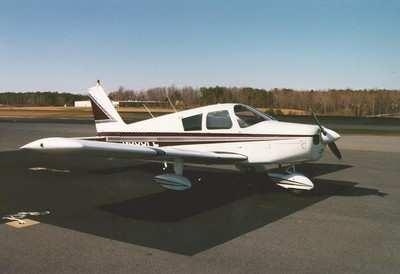Mon, Mar 09, 2020
Piper PA-28 Impacted Mountainous Terrain
The NTSB has released a preliminary report from an accident which occurred January 24 about 10 miles southwest of Payson Airport (KPAN), Payson, AZ. The Piper PA-28-140 (Cherokee) impacted mountainous terrain, and a post-impact fire ensued. One passenger on board the aircraft was fatally injured and the private pilot and another passenger sustained serious injuries.

Visual meteorological conditions prevailed, and no flight plan was filed for the cross-country flight that originated from KPAN at about 0900 local time.
The pilot stated in an interview that after a flight earlier that morning from Falcon Field Airport (KFFZ), Mesa, Arizona, he landed in PAN, refueled, and departed for the return flight back to KFFZ. During the return flight, the pilot decided to fly over the mountains southwest of their position. He stated that he flew about 1,000 ft above ground level (agl) over the mountains, while the passengers were spotting wildlife on the terrain below. The pilot stated the airplane was running well and doesn't remember anything else until waking up in a small creek at the accident site.
Preliminary flight track data showed the airplane depart KPAN and fly to the Mazatzal Mountain Range. While maintaining an altitude of about 1,000 ft agl above the mountainous terrain, the airplane made a 280° turning maneuver, then descended over a canyon. About a half mile from the accident site, the flight track turned left and the turn radius increased before the track data ceased. The last recorded flight track data point was located about 500 ft from the accident site and about 200 ft agl.
Examination of the accident site revealed the airplane impacted steep brush covered terrain. The wreckage including all major structural airplane components, and primary flight controls were contained within the debris field that was about 145 ft long and oriented on a magnetic heading of about 35°. The propeller was found about halfway through the debris field and the blades revealed leading edge gouging and loss of blade material at the tips. The main wreckage was found on top of rocks located along the stream. The cabin and forward fuselage were mostly consumed by postimpact fire. The left wing and empennage were found partially attached to the main wreckage and had postimpact fire damage.
The wreckage was recovered to a secure facility for further examination.
(Source: NTSB. Image from file. Not accident airplane)
More News
Aero Linx: International Federation of Airworthiness (IFA) We aim to be the most internationally respected independent authority on the subject of Airworthiness. IFA uniquely combi>[...]
Ultrahigh Frequency (UHF) The frequency band between 300 and 3,000 MHz. The bank of radio frequencies used for military air/ground voice communications. In some instances this may >[...]
A Few Questions AND Answers To Help You Get MORE Out of ANN! 1) I forgot my password. How do I find it? 1) Easy... click here and give us your e-mail address--we'll send it to you >[...]
From 2019 (YouTube Edition): Learning To Paint Without Getting Any On Your Hands PPG's Aerospace Coatings Academy is a tool designed to teach everything one needs to know about all>[...]
Also: Sustainable Aircraft Test Put Aside, More Falcon 9 Ops, Wyoming ANG Rescue, Oreo Cookie Into Orbit Joby Aviation has reason to celebrate, recently completing its first full t>[...]
 ANN's Daily Aero-Linx (05.06.25)
ANN's Daily Aero-Linx (05.06.25) ANN's Daily Aero-Term (05.06.25): Ultrahigh Frequency (UHF)
ANN's Daily Aero-Term (05.06.25): Ultrahigh Frequency (UHF) ANN FAQ: Q&A 101
ANN FAQ: Q&A 101 Classic Aero-TV: Virtual Reality Painting--PPG Leverages Technology for Training
Classic Aero-TV: Virtual Reality Painting--PPG Leverages Technology for Training Airborne 05.02.25: Joby Crewed Milestone, Diamond Club, Canadian Pilot Insurance
Airborne 05.02.25: Joby Crewed Milestone, Diamond Club, Canadian Pilot Insurance



